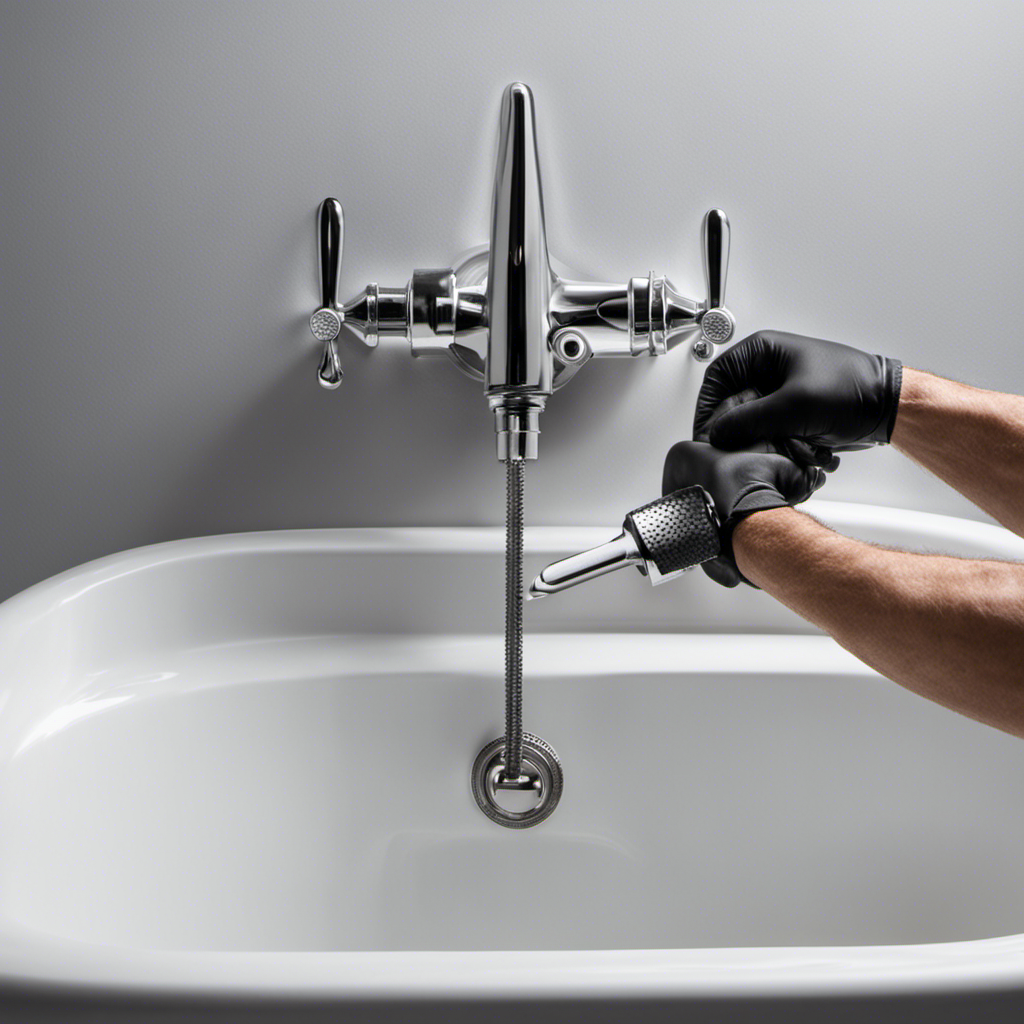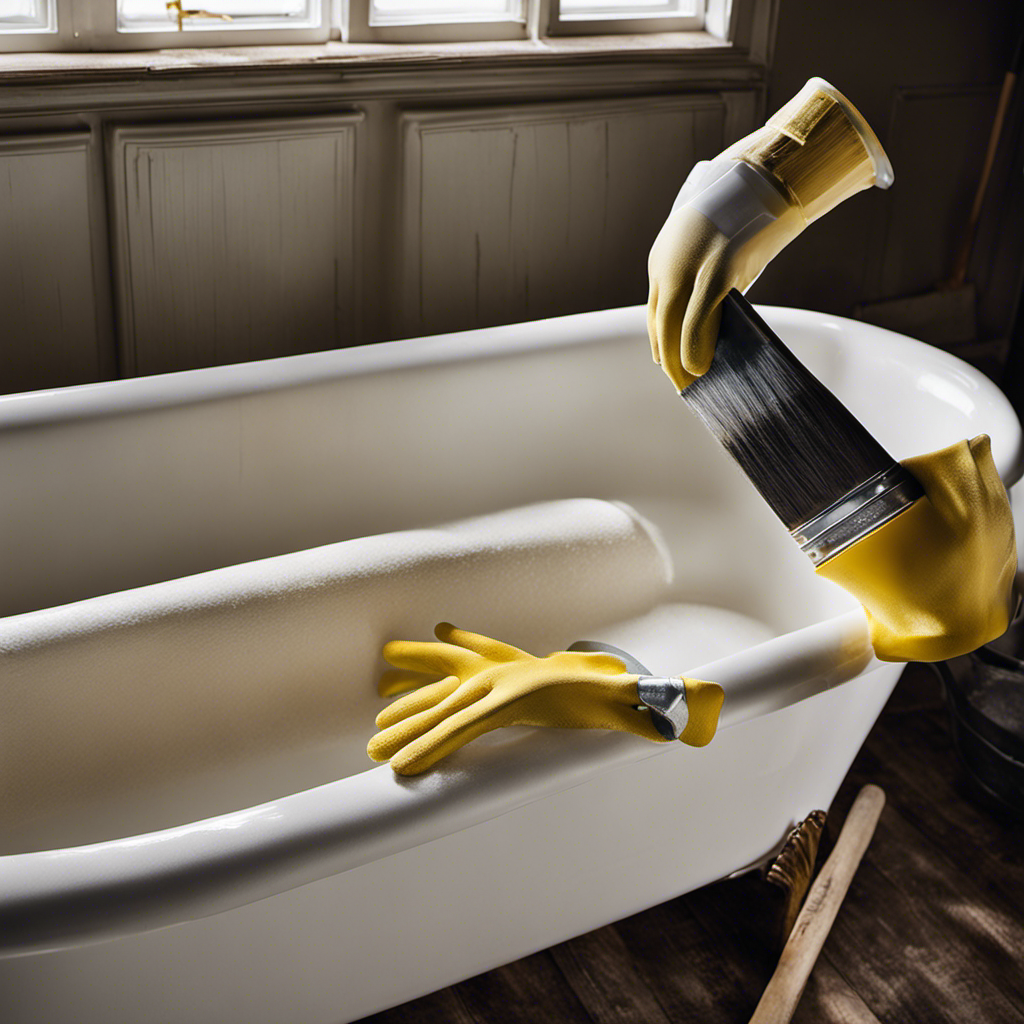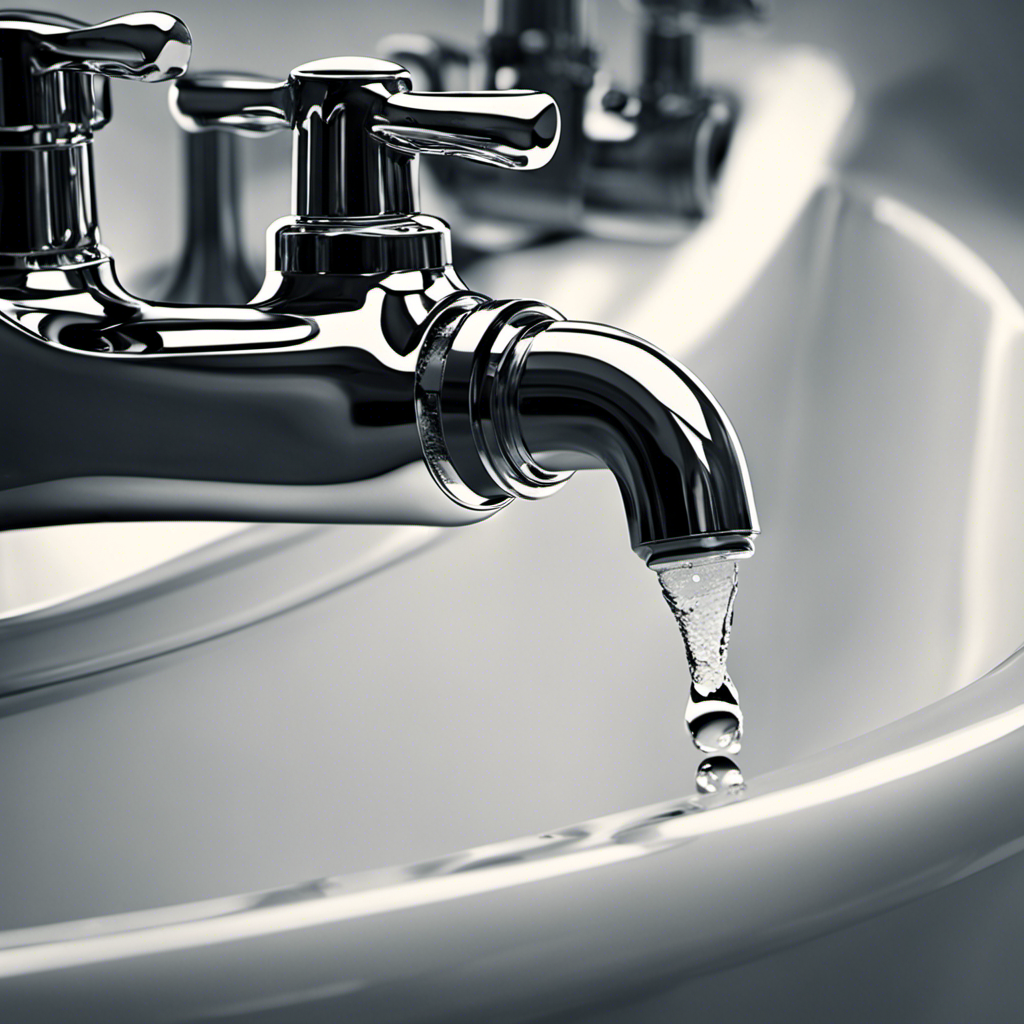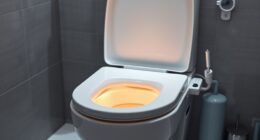I’ve been there – standing in the shower, ankle-deep in water, desperately trying to figure out how to remove that stubborn bathtub drain plug. Well, fear no more!
In this article, I’ll guide you through the step-by-step process of getting that pesky plug out once and for all. With the right tools and a little know-how, you’ll have your drain flowing freely in no time.
So, let’s dive in and conquer this drain plug dilemma together!
Key Takeaways
- Different types of bathtub drain plugs require different removal techniques
- Using a plunger or homemade drain cleaner can help loosen stubborn plugs
- Clearing the bathtub area and having the necessary tools and materials ready is important for the removal process
- If all else fails, it may be necessary to call a professional plumber for assistance.
Tools and Materials Needed
You’ll need a pair of pliers, a screwdriver, and a drain removal tool to remove the bathtub drain plug. When it comes to bathtub drain stopper replacement or troubleshooting bathtub drain plugs, having the right tools is essential.
The first tool you’ll need is a pair of pliers. These will help you grip and twist the drain plug.
Next, grab a screwdriver. This will be used to remove any screws or fasteners holding the drain plug in place.
Finally, a drain removal tool is necessary. This specialized tool is designed to fit into the drain and unscrew the plug.
With these tools in hand, you’ll be well-equipped to remove the bathtub drain plug and tackle any issues with your drain.
Understanding Different Types of Bathtub Drain Plugs
When it comes to bathtub drain plugs, it’s important to understand the different types that are commonly used.
There are several common drain plug types, including the push-pull, the lift-and-turn, and the toe-touch. Each type has its own unique mechanism for opening and closing the drain.
However, sometimes removing these plugs can be a challenge, especially if they have become stubborn over time.
Common Drain Plug Types
To identify common drain plug types, check if your bathtub has a lift-and-turn, push-pull, or toe-touch style plug. These different materials and installation methods offer varying levels of convenience and functionality.
The lift-and-turn plug is made of durable materials like brass or stainless steel, and it requires you to lift and turn the plug to open or close the drain.
The push-pull plug is typically made of plastic and is easy to operate by simply pushing it down to close the drain or pulling it up to open it.
Lastly, the toe-touch plug is constructed with a rubber seal and is activated by pressing it with your toe.
Now that you know the common drain plug types, let’s move on to the next section and learn how to remove stubborn plugs.
Removing Stubborn Plugs
If a stubborn plug is stuck, try using a plunger to dislodge it. This simple tool can create the necessary suction to loosen the plug and allow water to flow freely again. However, if the plunger doesn’t work, there are other methods you can try to remove the stuck plug.
Here are some options:
-
Using a homemade drain cleaner: Mix equal parts of baking soda and vinegar and pour it down the drain. Let it sit for a few minutes before flushing it with hot water. The chemical reaction can help dissolve any buildup that may be causing the plug to stick.
-
Using a wire hanger: Straighten a wire hanger and create a small hook at one end. Insert the hook into the drain and try to catch onto the plug. Gently pull and twist to release the plug.
-
Using lubricant: Apply a generous amount of dish soap or petroleum jelly around the edges of the plug. This can provide lubrication and make it easier to remove.
Remember to always use caution when attempting to remove a stuck plug, and if all else fails, it may be best to call a professional plumber.
Preparing the Bathtub Area
First, gather all the necessary tools and materials for preparing the bathtub area. To clear clogs and ensure proper maintenance, it’s important to have a few key items on hand. You’ll need a plunger, a drain snake, a bucket, rubber gloves, and a wrench. These tools will help you tackle any clog and keep your bathtub drain running smoothly.
Before starting, make sure to remove any items around the bathtub that may obstruct your access. Clear the area of any shampoo bottles, soap dishes, or bath toys. Also, place a bucket nearby to catch any water that may spill during the process.
Removing the Stopper From Lift-And-Turn Drain Plugs
Now, you’ll need to twist and lift the stopper to remove it from your bathtub’s drain. Removing a stuck drain plug can be a frustrating task, but with the right technique, it can be done effectively. Here’s how to do it:
-
Apply lubricating oil: Before attempting to remove the drain plug, apply a generous amount of lubricating oil to the stopper. This will help loosen any rust or debris that may be causing it to stick.
-
Use pliers: If the stopper is still stuck, you can use a pair of pliers to get a better grip. Simply grab onto the stopper and twist it counterclockwise to loosen it. Be careful not to apply too much force, as this could damage the drain.
-
Clean the drain: Once you have successfully removed the stopper, take the opportunity to clean the bathtub drain thoroughly. Use a drain brush or a mixture of baking soda and vinegar to remove any hair or soap scum that may have accumulated.
Removing the Stopper From Push-Pull Drain Plugs
When it comes to removing the stopper from push-pull drain plugs, there are a few key points to keep in mind.
First, you’ll need a few tools for the removal process, including a screwdriver, pliers, and possibly a wrench.
The step-by-step removal process involves loosening the screw, pulling out the stopper, and disconnecting any linkage.
However, there are common challenges that may arise, such as stubborn screws or corroded parts, but solutions such as applying lubricant or using a wrench can help overcome these obstacles.
Tools Needed for Removal
To remove the bathtub drain plug, you’ll need a pair of pliers and a flathead screwdriver. Proper tools selection is crucial for a successful removal. Here’s a list of tools you’ll need:
- Pliers: These will help you grip and turn the drain plug, allowing you to loosen it.
- Flathead screwdriver: This tool is useful for prying and lifting the drain plug out of its position.
- Bucket or container: It’s important to have a container nearby to catch any water that may come out when removing the plug.
Using the right tools and following the proper removal technique ensures a smooth process. Now that we have the necessary tools ready, let’s move on to the step-by-step removal process.
Step-By-Step Removal Process
First, grip the drain plug with the pliers and turn it counterclockwise to loosen it. Understanding different types of bathtub drain plugs is crucial for successful removal. Some common types include lift-and-turn, push-and-pull, and toe-touch plugs. Each type requires a slightly different approach for removal.
For lift-and-turn plugs, after loosening it with the pliers, lift the plug up and twist it counterclockwise to fully remove it.
Push-and-pull plugs can be removed by pulling up on the plug and wiggling it side to side until it comes out.
Toe-touch plugs can be released by pushing down on the plug and turning it counterclockwise.
If the drain plug is stubborn and won’t budge, try using a drain key or a drain removal tool to provide more leverage and strength.
Common Challenges and Solutions
One common challenge when removing a bathtub drain plug is encountering a stubborn plug that won’t budge. It can be frustrating when you’re trying to clear a clog or perform maintenance on your bathtub, but the plug just won’t come out. Here are some tips to help you overcome this challenge:
-
Apply lubricant: Use a lubricant like WD-40 or silicone spray to loosen the plug. Spray it around the edges of the plug and let it sit for a few minutes before trying to remove it.
-
Use pliers: If the plug is still stuck, you can try using pliers to grip it and twist it out. Make sure to protect the finish of your plug by wrapping it in a cloth before using the pliers.
-
Heat it up: Another method is to heat the plug with a hairdryer or hot water. The heat can expand the metal, making it easier to remove.
Removing the Stopper From Toe-Touch Drain Plugs
You can easily remove the stopper from toe-touch drain plugs by following these steps.
First, locate the small lever or button on the drain plug. This is usually found near the edge of the bathtub. Once located, press the lever or button down firmly. This will release the stopper and allow it to be pulled out of the drain. If the stopper is difficult to remove, you may need to wiggle it gently from side to side while pulling upwards.
To ensure proper functioning of your toe-touch drain plug, it is important to regularly clear any clogs and perform basic maintenance. This can be done by using a plunger to dislodge any debris or by using a drain snake to physically remove the clog. Regularly cleaning and inspecting the stopper for any damage or buildup will also help to prevent future clogs.
Now that you know how to remove the stopper from toe-touch drain plugs, let’s move on to the next step: removing the trip lever assembly from bathtub drain plugs.
Removing the Trip Lever Assembly From Bathtub Drain Plugs
When it comes to bathtub drain plugs, one common issue that homeowners often encounter is the need to remove the trip lever assembly. This can be a tricky process, but with the right techniques, it can be done effectively.
In this discussion, I will guide you through the step-by-step process of removing the trip lever assembly from your bathtub drain plug, as well as address some of the most common issues you may come across during this task.
Trip Lever Removal Techniques
To remove the bathtub drain plug, try wiggling the trip lever back and forth. This motion can help loosen any debris or sediment that may be causing the drain plug to stick. If wiggling the trip lever doesn’t work, you may need to take additional steps to remove the drain plug. Here are a few techniques you can try:
-
Use a pliers: Gently grip the trip lever with a pair of pliers and rotate it counterclockwise to unscrew it from the drain pipe.
-
Apply lubricant: Spray a small amount of lubricant, such as WD-40, onto the trip lever and let it sit for a few minutes. Then, try wiggling or unscrewing the lever again.
-
Call a professional: If all else fails, it may be necessary to call a professional plumber to remove the drain plug and troubleshoot any issues with the trip lever.
Remember to always exercise caution when working with plumbing fixtures and consider seeking professional help if needed. Proper trip lever maintenance and troubleshooting can help keep your bathtub drain working smoothly.
Common Bathtub Drain Issues
After learning how to remove the trip lever, it’s crucial to understand common bathtub drain issues that may arise.
One common problem is a clogged drain, which can be resolved through bathtub drain cleaning. Over time, hair, soap scum, and other debris can accumulate and block the drain, causing water to drain slowly or not at all. To address this issue, a drain cleaning tool or a mixture of baking soda and vinegar can be used to dissolve the clog.
Another common issue is a faulty or damaged drain, which may require bathtub drain installation. This involves removing the old drain and replacing it with a new one to ensure proper drainage.
Now that we’ve covered common bathtub drain issues, let’s move on to removing the strainer from bathtub drain plugs.
Removing the Strainer From Bathtub Drain Plugs
You can easily remove the strainer from bathtub drain plugs by using a screwdriver.
To troubleshoot bathtub drain plugs, follow these steps:
-
Step 1: Locate the drain plug in your bathtub. It is usually located in the center of the tub, underneath the faucet.
-
Step 2: Insert the tip of the screwdriver into one of the holes on the strainer. Apply gentle pressure and twist counterclockwise to loosen the strainer.
-
Step 3: Continue twisting until the strainer is completely loose. Carefully lift it out of the drain, making sure not to drop any small parts down the drain.
Removing the strainer is an important step in troubleshooting bathtub drain plugs. It allows you to inspect and clean the drain, as well as remove any hair or debris that may be causing a clog.
Clearing Clogs in Bathtub Drain Plugs
If your bathtub is clogged, try using a plunger to clear the blockage. This is one of the most effective and common troubleshooting techniques for clearing clogs in bathtub drain plugs.
To begin, fill the tub with enough water to cover the rubber part of the plunger. Place the plunger over the drain and pump it up and down vigorously. The suction created by the plunger will force the clog to dislodge and move down the drain.
If the plunger doesn’t work, you can try using a drain snake or a chemical drain cleaner specifically designed for clearing clogs in bathtubs. These tools can help break up and remove stubborn clogs.
If these methods fail, it may be necessary to replace the bathtub drain plug entirely.
Replacing the Bathtub Drain Plug
To replace the bathtub drain plug, simply unscrew the old one and screw in the new one. It’s a straightforward process that can be done in just a few simple steps. Here’s how:
-
First, locate the drain plug in your bathtub. It is typically located in the center of the tub, near the bottom.
-
Use a screwdriver or a pair of pliers to unscrew the old drain plug in a counterclockwise direction. Be careful not to apply too much force, as this may damage the drain or surrounding area.
-
Once the old plug is removed, take the new drain stopper and screw it into place in a clockwise direction. Make sure it is securely fastened and does not wobble.
By following these steps, you can easily replace your bathtub drain plug and ensure that your tub drains smoothly without any issues.
If you encounter any problems or difficulties during the process, it’s always a good idea to consult a professional plumber for further assistance.
Maintenance Tips for Bathtub Drain Plugs
For proper maintenance of your bathtub drain plug, it’s important to regularly clean it to prevent clogs and buildup. Neglecting this simple task can lead to slow draining, foul odors, and even complete blockages in your bathtub drain. To help you keep your drain plug in optimal condition, here are some maintenance tips:
| Maintenance Tips for Bathtub Drain Plugs |
|---|
| 1. Remove hair and debris from the drain plug after each use. |
| 2. Use a drain cleaner or vinegar and baking soda mixture to dissolve any buildup. |
| 3. Regularly check the rubber gasket or seal for wear and tear. Replace if necessary. |
| 4. Avoid using harsh chemicals or abrasive cleaners that can damage the drain plug. |
| 5. Consider using a drain strainer to catch hair and other debris before it reaches the drain plug. |
Frequently Asked Questions
How Do I Prevent My Bathtub Drain Plug From Getting Clogged?
To prevent my bathtub drain plug from getting clogged, regular maintenance is crucial. I make sure to remove any hair or debris from the drain and use a drain cover to catch any potential clog-causing substances.
Can I Use a Plunger to Remove a Bathtub Drain Plug?
Sure, I can definitely help you with that! When it comes to removing a bathtub drain plug, there are a few alternatives to using a plunger and you can even do it without any tools.
What Should I Do if the Drain Plug Is Stuck and Won’t Come Out?
To loosen a stuck drain plug, I would first try using a pair of pliers or a wrench to apply some force. If that doesn’t work, I might use a lubricant or even call a professional plumber for assistance.
Is It Necessary to Remove the Trip Lever Assembly to Replace the Bathtub Drain Plug?
Yes, it is possible to replace the bathtub drain plug without removing the trip lever assembly. However, it is important to ensure that the new drain plug is compatible with your bathtub’s plumbing system.
Are There Any Alternative Methods for Removing a Stubborn Bathtub Drain Plug?
There are alternative methods for removing a stubborn bathtub drain plug. One option is to use a plunger to create suction and pull out the plug. Another method involves using a drain snake to dislodge and remove the plug.
Conclusion
In conclusion, removing a bathtub drain plug may seem like a daunting task, but with the right tools and knowledge, it can be done easily. By understanding the different types of drain plugs and following the proper steps, you can successfully remove the stopper or strainer and clear any clogs that may be causing issues.
Remember to replace the drain plug properly and perform regular maintenance to ensure a smoothly functioning bathtub. Just like unclogging a drain, removing a drain plug requires patience and perseverance, as it is a small but important task in maintaining the overall functionality of your bathroom.










